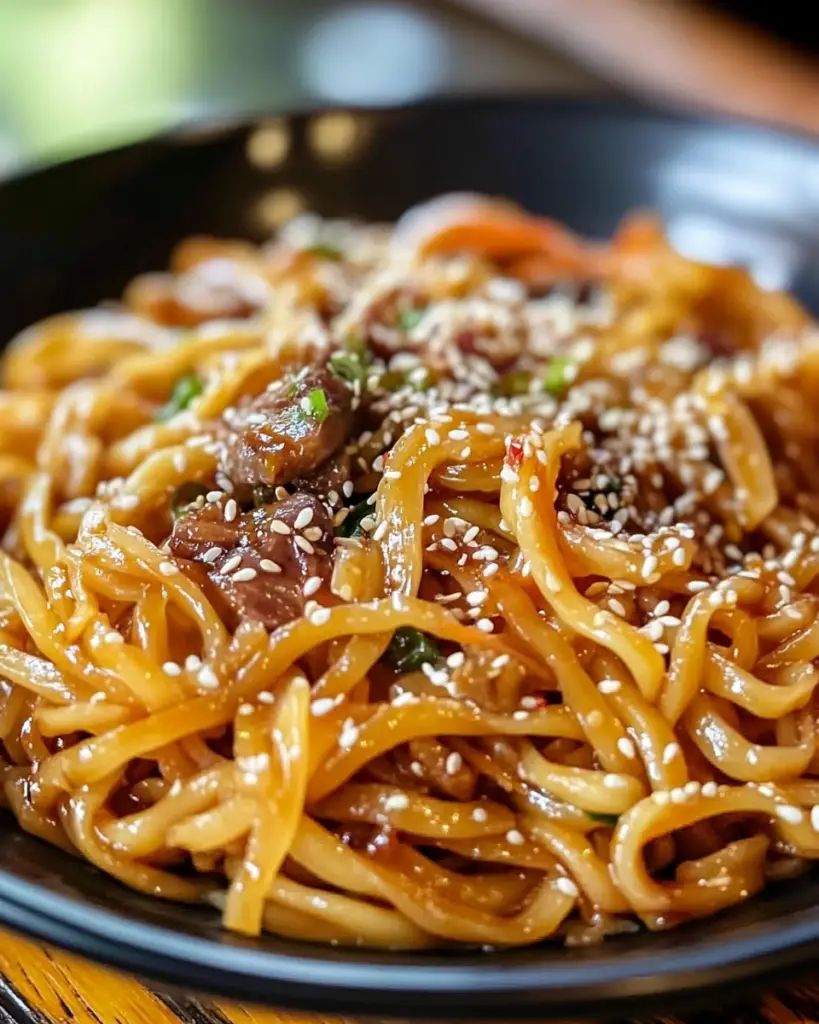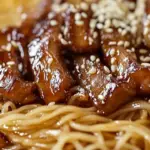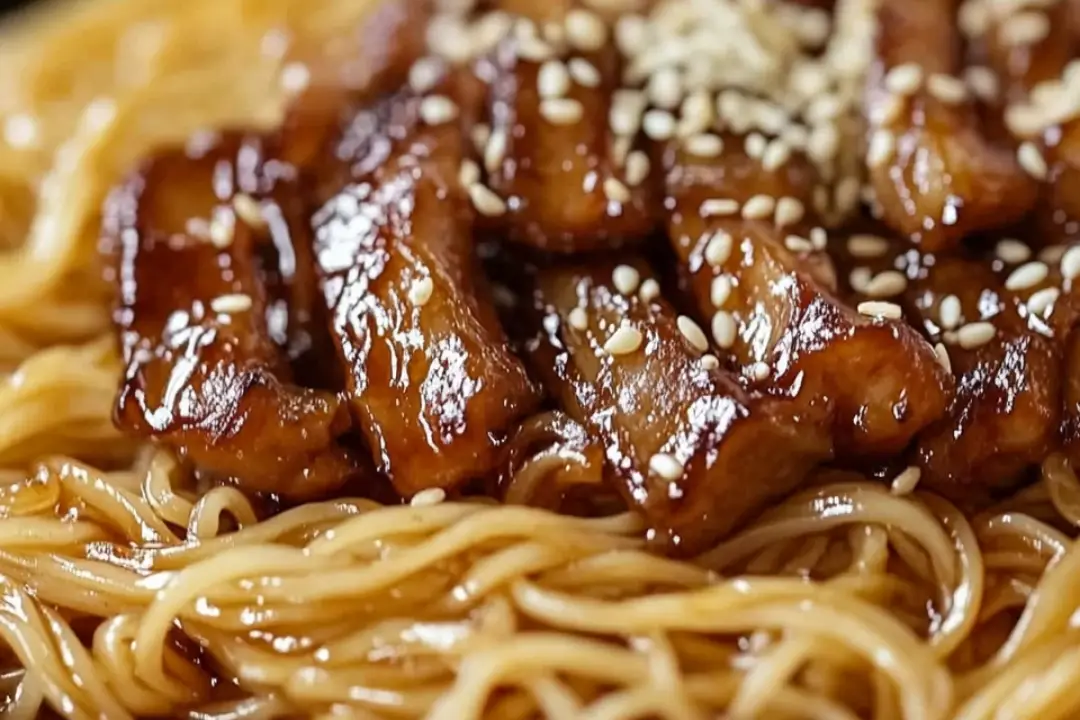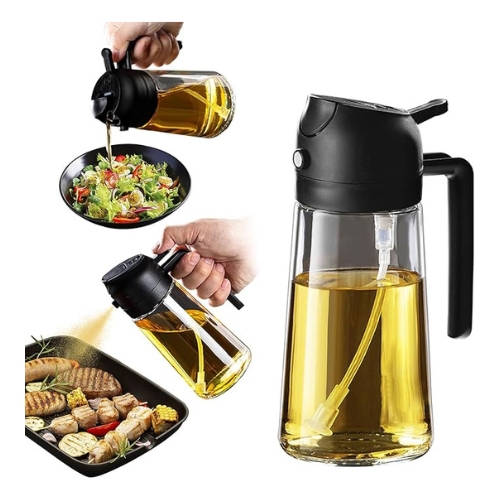If you’ve ever been to a hibachi grill, you know the irresistible allure of those sizzling, perfectly seasoned noodles. Now imagine bringing that same mouthwatering experience to your kitchen with these Hibachi Noodles. Picture soft, golden noodles tossed in a savory, slightly sweet sauce with hints of garlic, ginger, and a touch of soy sauce, then finished with a sprinkle of green onions. It’s the perfect balance of flavors, and it’s shockingly easy to recreate at home. Trust me, these noodles will make you feel like you’re sitting at your favorite hibachi grill, without ever leaving your kitchen.
Why You’ll Love Hibachi Noodles
Flavor Explosion in Every Bite
This dish has all the flavors you crave from hibachi-style cooking. The combination of garlic, soy sauce, sesame oil, and a touch of sweetness makes every bite more irresistible than the last.
Quick and Easy
Hibachi Noodles come together in just 20 minutes, making it a perfect weeknight meal or a fast side dish to serve with other Asian-inspired dishes. No long prep or cooking time required!
Customizable to Your Taste
Feel free to make it your own by adding protein like shrimp, chicken, or tofu, or throw in some extra veggies like bell peppers, carrots, or broccoli. The possibilities are endless!
Light Yet Satisfying
While it’s a flavorful dish, it’s light enough to enjoy as a side or a main. It’s the ideal comfort food, without feeling too heavy.

Disclosure: This post contains affiliate links.If you click and make a purchase, I may earn a small commission at no extra cost to you.
Ingredients
For the Hibachi Noodles, you’ll need:
- Noodles: Choose your favorite noodle—soba, udon, or even spaghetti works great in this dish.
- Soy Sauce: The base of the sauce, adding that umami depth and salty kick.
- Sesame Oil: A rich, nutty oil that infuses the noodles with that signature hibachi flavor.
- Butter: Adds a touch of creaminess and richness to the noodles.
- Garlic: Minced garlic brings in a fragrant, savory flavor.
- Ginger: Freshly grated ginger adds a warm, spicy kick that pairs perfectly with the soy sauce.
- Brown Sugar: A little sweetness to balance out the salty and savory flavors.
- Green Onions: For a burst of freshness and color.
- Sesame Seeds: Optional, but they add a crunchy texture and nutty flavor that makes the dish feel even more authentic.
(Note: Full ingredient measurements are provided in the recipe card above.)
Instructions
1. Cook the Noodles
Start by cooking your noodles according to package directions. Once done, drain and set aside. If you’re using spaghetti, just be sure to cook it al dente for the best texture.
2. Prepare the Sauce
In a small bowl, combine soy sauce, sesame oil, brown sugar, and a little bit of water. Stir until the sugar dissolves, then set aside. This sauce is the magic that brings everything together!
3. Sauté Garlic and Ginger
In a large pan or wok, heat the butter over medium heat. Once melted, add the minced garlic and grated ginger. Sauté for about 1-2 minutes, or until fragrant. Don’t let the garlic burn—it should just get aromatic!
4. Toss the Noodles
Add the cooked noodles to the pan, tossing them with the garlic and ginger. Pour the prepared sauce over the noodles and stir well to coat evenly. Let everything cook together for another 2-3 minutes, allowing the noodles to absorb the flavor.
5. Add the Finishing Touches
Once the noodles are well coated and heated through, remove the pan from heat. Sprinkle with sesame seeds (if using) and garnish with chopped green onions. You’re done—time to dig in!
6. Serve and Enjoy
Serve your Hibachi Noodles immediately while they’re still warm, either on their own or as a side dish with your favorite protein or vegetables.
Nutrition Facts
Servings: 4
Calories per serving: 310
Total Fat: 13g
Saturated Fat: 3g
Cholesterol: 15mg
Sodium: 830mg
Total Carbohydrates: 45g
Dietary Fiber: 2g
Sugars: 10g
Protein: 7g
Preparation Time
Prep Time: 5 minutes
Cook Time: 15 minutes
Total Time: 20 minutes
How to Serve Hibachi Noodles
These Hibachi Noodles are incredibly versatile and pair well with many dishes. Here are some great ideas to round out your meal:
Pair with Grilled Meat or Fish
Serve these noodles alongside grilled chicken, steak, or shrimp for a full hibachi-inspired feast.
Veggies Galore
Sautéed vegetables like zucchini, mushrooms, or snap peas make a perfect side to these flavorful noodles. You could also add them directly to the pan for a one-pot meal.
Top with an Egg
For a richer dish, top your Hibachi Noodles with a fried or scrambled egg. It adds protein and a creamy texture that complements the noodles beautifully.
A Simple Salad
Pair with a light, crisp salad—perhaps a simple cucumber salad or even a mixed greens salad with a tangy dressing.
Additional Tips
- Adjust the Sweetness: If you prefer a sweeter dish, add a bit more brown sugar to the sauce. If you like it savory, reduce the sugar to taste.
- Add Protein: You can toss in grilled shrimp, chicken, or even tofu to make the dish more filling and hearty.
- Use Other Noodles: If you’re craving a different noodle, soba or udon noodles are a great alternative to spaghetti.
- Spice It Up: For a little kick, add some red pepper flakes or a dash of hot sauce to the sauce mixture.
- Meal Prep: These noodles make a great make-ahead dish. Store leftovers in an airtight container in the fridge for up to 3 days.
FAQ Section
Q1: Can I use a different kind of oil?
A1: Yes, you can use vegetable oil instead of sesame oil, but sesame oil gives it that distinct hibachi flavor that’s hard to replicate. If you can, I recommend sticking with sesame oil for authenticity.
Q2: Can I make this recipe vegan?
A2: Absolutely! Simply swap out the butter for vegan butter or olive oil, and use a plant-based noodle like soba or rice noodles.
Q3: Can I add other vegetables?
A3: Yes! Feel free to toss in veggies like mushrooms, bell peppers, or carrots. Just sauté them in the same pan before adding the noodles.
Q4: Can I use a different kind of noodle?
A4: Yes, you can use any kind of noodle you prefer! Udon noodles or soba noodles are great alternatives to spaghetti.
Q5: How do I store leftovers?
A5: Store leftovers in an airtight container in the fridge for up to 3 days. Reheat in the microwave or in a pan with a splash of water to prevent drying out.
Q6: How can I make the noodles spicier?
A6: Add red pepper flakes to the sauce or drizzle with a little chili oil to give the noodles a spicy kick.
Q7: Can I make these noodles ahead of time?
A7: Yes, you can cook and store the noodles ahead of time. Simply reheat them in a pan with a splash of water or a little more soy sauce when ready to serve.
Q8: Can I use low-sodium soy sauce?
A8: Absolutely! If you’re watching your sodium intake, feel free to use low-sodium soy sauce. Just adjust the seasoning as needed.
Q9: What should I serve these noodles with?
A9: Hibachi Noodles pair wonderfully with grilled meats, shrimp, or tofu. You can also serve them with sautéed vegetables or a simple salad for a lighter meal.
Q10: Can I freeze Hibachi Noodles?
A10: While these noodles are best fresh, you can freeze them for up to a month. Be sure to store them in an airtight container, and reheat gently in a pan with a little water or broth.
Conclusion
These Hibachi Noodles bring all the flavors of your favorite hibachi grill right into your home. With a savory sauce, tender noodles, and just the right amount of garlic and ginger, this dish is guaranteed to be a hit. Plus, it’s quick, easy, and fully customizable to your tastes. Whether you serve it as a side or make it the main event, you’ll find yourself coming back for seconds (and maybe thirds). Enjoy!
Print
Hibachi Noodles
- Total Time: 25 minutes
- Yield: 4 servings
Description
These Hibachi Noodles are a deliciously savory and flavorful dish, inspired by the popular hibachi grill style of cooking. The noodles are stir-fried with vegetables, garlic, and soy sauce, then finished with a touch of butter and a squeeze of lemon for the perfect balance of flavors. It’s a simple, yet flavorful side dish that can be paired with any hibachi-style meal or served as a standalone treat.
Ingredients
-
8 oz lo mein or soba noodles (you can use spaghetti if you don’t have lo mein noodles)
-
2 tbsp sesame oil (or vegetable oil)
-
3 cloves garlic, minced
-
1 small onion, sliced
-
1 medium carrot, julienned or sliced thinly
-
½ cup sliced mushrooms (optional)
-
2 tbsp soy sauce
-
1 tbsp oyster sauce (optional, but adds a rich flavor)
-
1 tbsp butter
-
1 tbsp lemon juice (optional, for a bit of brightness)
-
1 tsp sesame seeds (for garnish)
-
2-3 green onions, sliced (for garnish)
Instructions
-
Cook the noodles:
Cook the lo mein or soba noodles according to the package instructions. Drain and set aside, reserving a little bit of the cooking water (about ½ cup). -
Prepare the stir-fry:
In a large skillet or wok, heat the sesame oil over medium-high heat. Add the minced garlic and sliced onion, and sauté for 1-2 minutes until fragrant and the onion begins to soften. -
Add the vegetables:
Add the julienned carrot and sliced mushrooms (if using) to the pan. Stir-fry for another 3-4 minutes until the vegetables are tender but still crisp. -
Add the noodles and sauces:
Add the cooked noodles to the pan with the vegetables. Pour in the soy sauce and oyster sauce (if using). Stir well to combine all the ingredients. Add the reserved noodle water a little at a time if the noodles seem dry or need to be loosened up. -
Finish the dish:
Stir in the butter and let it melt into the noodles, giving them a rich and glossy finish. If desired, add a squeeze of lemon juice for a fresh burst of flavor. -
Garnish and serve:
Transfer the hibachi noodles to a serving dish and garnish with sesame seeds and sliced green onions. Serve hot and enjoy!
Notes
-
If you want a little more protein, you can add cooked chicken, shrimp, or beef to the dish.
-
For extra flavor, add a pinch of red pepper flakes for some heat or a splash of rice vinegar for tang.
-
If you can’t find lo mein or soba noodles, spaghetti or even rice noodles can be used as alternatives.
- Prep Time: 10 minutes
- Cook Time: 15 minutes
- Category: Main Dish
- Method: Stovetop
- Cuisine: Japanese, Asian
Nutrition
- Serving Size: 1/4 of the recipe
- Calories: 350 kcal
- Sugar: 6g
- Sodium: 850mg
- Fat: 18g
- Saturated Fat: 2g
- Unsaturated Fat: 12g
- Trans Fat: 0g
- Carbohydrates: 45g
- Fiber: 3g
- Protein: 6g
- Cholesterol: 15mg




